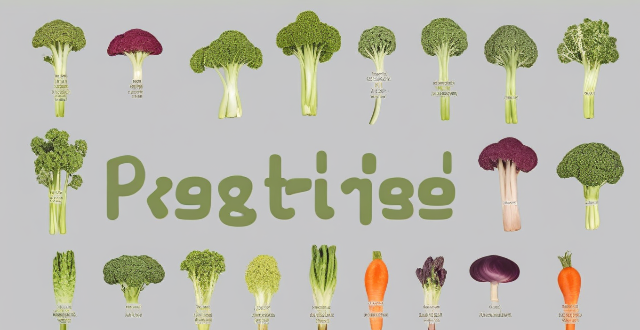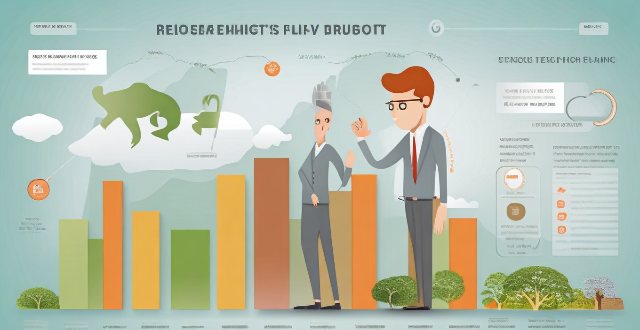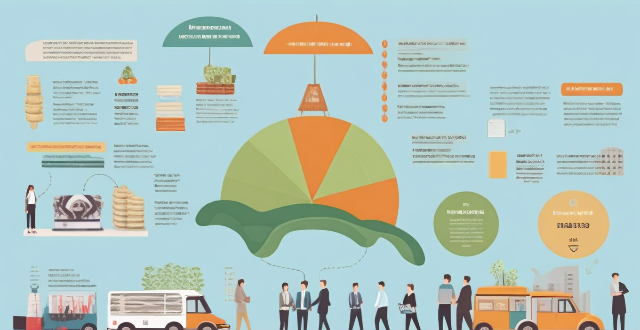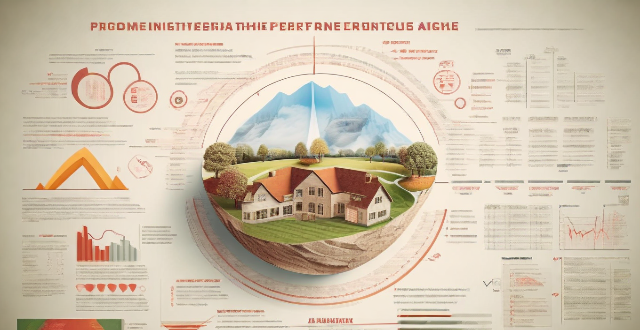Gluten Planning

How does going gluten-free affect children's nutrition ?
Going gluten-free can affect children's nutrition by reducing their intake of protein, vitamins, minerals, and fiber. To ensure they receive all the necessary nutrients, parents should include alternative sources of protein, such as beans and nuts, and high-fiber foods like fruits and vegetables. Meal planning is key to ensuring a balanced diet, and shopping tips include reading labels carefully and comparing prices. With careful planning, it is possible to provide children with healthy and delicious gluten-free meals that meet all nutritional needs.

What are some good options for gluten-free lunch box meals ?
Gluten-free lunch box meals offer variety and nutrition for those with dietary restrictions. This guide suggests sandwich alternatives, protein-packed options, vegetable-focused meals, grains and legumes, and desserts and snacks that are gluten-free. It encourages creativity in meal planning to ensure enjoyable and nutritious midday meals.

Can you suggest any delicious gluten-free recipes ?
Gluten-free recipes are becoming increasingly popular as more people are diagnosed with celiac disease or choose to follow a gluten-free diet for other reasons. Here are some delicious and easy-to-make gluten-free recipes, including pancakes, oatmeal, sandwiches, and salads.

What kind of restaurants offer reliable gluten-free menus ?
Gluten-free menus are becoming more common in restaurants, but it's important to know where to find reliable options. Fast food chains, fine dining restaurants, ethnic eateries, vegetarian/vegan spots, and bakeries/cafes all offer gluten-free items. Look for certifications, check online reviews, and ask questions to ensure safe and satisfying meals.

How do I know if a product is truly gluten-free ?
Gluten-free products are becoming increasingly popular, but it's important to know how to identify whether a product is truly gluten-free. Here are some tips: 1. Check the Label 2. Look for Certifications 3. Read the Ingredient List 4. Be Wary of Cross-Contamination 5. Trust Reputable Brands 6. Ask Questions

Is it more expensive to buy gluten-free products compared to regular ones ?
Gluten-free products are generally more expensive than regular ones due to higher production costs, specialized equipment needs, and a smaller market. The price difference can be significant, with some gluten-free items costing up to double the amount of their gluten-containing counterparts.

What are some dinner recipes that are gluten-free and still taste great ?
Gluten-free diets have become increasingly popular in recent years, not just for those with celiac disease or gluten sensitivities but also for those looking to try a new way of eating. Luckily, there are plenty of delicious dinner recipes that are gluten-free and still taste great. Here are some of our favorites: 1. Grilled Chicken with Roasted Vegetables 2. Quinoa Stuffed Bell Peppers 3. Gluten-Free Pizza

How can I maintain a balanced diet while following a gluten-free lifestyle ?
The text provides tips on maintaining a balanced diet while following a gluten-free lifestyle, emphasizing the importance of whole foods, gluten-free grains, healthy fats, protein, fiber, limiting processed foods, and staying hydrated. It suggests seeking professional advice if needed.

What are some good gluten-free food options for people with celiac disease ?
Celiac disease is an autoimmune disorder that damages the small intestine and requires a strict gluten-free diet. Good gluten-free food options for people with celiac disease include fruits and vegetables, meat and fish, gluten-free grains and starches like quinoa and brown rice, dairy products, nuts and seeds, gluten-free flours and baking mixes, and gluten-free snacks and beverages like popcorn and juices.

Are there any potential side effects of switching to a gluten-free diet ?
Switching to a gluten-free diet can have several potential side effects, including nutrient deficiencies, digestive issues, weight gain, headaches and fatigue, and higher cost. It is important to be aware of these potential side effects and take steps to ensure adequate nutrition on a gluten-free diet. Consultation with a healthcare professional is recommended before making any significant changes to your diet.

What are some gluten-free breakfast options that don't sacrifice flavor ?
Gluten-Free Breakfast Options that Don't Sacrifice Flavor: Gluten-free pancakes, oatmeal with fruits and nuts, egg dishes, smoothies, gluten-free cereals, and breads are all delicious and healthy breakfast options for those who are gluten-free.

What are the most common ingredients used in gluten-free baking ?
Gluten-free baking is a method of preparing baked goods without using wheat flour or other sources of gluten. Here are the most common ingredients used in gluten-free baking: Flours and Starches: Rice Flour, Almond Flour, Potato Starch, Tapioca Flour, Cornstarch Binding Agents: Xanthan Gum, Guar Gum, Eggs Sweeteners: Honey, Maple Syrup, Stevia Fats and Oils: Butter, Coconut Oil, Olive Oil

What are some vegetarian recipes that are also gluten-free ?
This text provides three vegetarian and gluten-free recipes that are both nutritious and delicious. The first recipe is for lentil soup, which is a hearty and filling meal. The second recipe is for quinoa salad, which is a great source of protein and makes an excellent base for a salad. The third recipe is for zucchini noodles with pesto sauce, which is a fantastic gluten-free alternative to traditional pasta. These recipes showcase the diversity of flavors and textures that can be achieved on a vegetarian and gluten-free diet.

Are there any health benefits to eating a gluten-free diet even if you don't have an allergy or intolerance ?
Eating a gluten-free diet has become increasingly popular in recent years, with many people choosing to eliminate gluten from their diets for various reasons. However, the question remains: are there any health benefits to eating a gluten-free diet even if you don't have an allergy or intolerance? ### Possible Health Benefits While the scientific evidence is limited and often conflicting, some studies suggest that a gluten-free diet may offer certain health benefits, even for those without celiac disease or gluten sensitivity. Here are a few potential advantages: 1. **Improved Digestive Health** - Some individuals report fewer digestive issues when they avoid gluten, such as bloating, gas, and diarrhea. 2. **Reduced Inflammation** - Gluten can cause inflammation in some people, which may contribute to chronic diseases like heart disease and diabetes. A gluten-free diet might help reduce this inflammation. 3. **Weight Loss** - Since many gluten-free products are lower in calories and fat than their gluten-containing counterparts, switching to a gluten-free diet could potentially lead to weight loss. 4. **Better Nutrient Absorption** - For those with undiagnosed gluten sensitivity, avoiding gluten may improve nutrient absorption and overall gut health. 5. **Increased Energy Levels** - Some people claim they feel more energetic after eliminating gluten from their diets, possibly due to improved digestion and nutrient absorption. ### Potential Downsides It's important to note that a gluten-free diet isn't necessarily healthier for everyone, and it can have its drawbacks: 1. **Nutrient Deficiencies** - Gluten-free foods often lack essential nutrients found in whole grains, such as fiber, B vitamins, iron, magnesium, and selenium. 2. **Higher Cost** - Gluten-free products tend to be more expensive than their gluten-containing counterparts. 3. **Processed Foods** - Many gluten-free alternatives are highly processed and contain added sugars, fats, and sodium to improve taste and texture. 4. **Social Challenges** - Dining out or attending social events can be more difficult on a gluten-free diet due to cross-contamination risks and limited menu options. 5. **Lack of Scientific Evidence** - There isn't enough research to support the idea that a gluten-free diet provides significant health benefits for people without allergies or sensitivities. ### Conclusion While a gluten-free diet may offer some potential health benefits for individuals without celiac disease or gluten sensitivity, these benefits are not guaranteed and should be weighed against the possible downsides. It's always best to consult with a healthcare professional before making significant changes to your diet, especially if you suspect you have an allergy or intolerance.

Are there any gluten-free breakfast alternatives that are also healthy ?
Gluten-free breakfast alternatives include oatmeal, eggs, yogurt with fruits and nuts, smoothies, and pancakes made from almond flour. These options provide essential nutrients such as fiber, protein, calcium, and vitamins while avoiding gluten.

How important is meal planning for maintaining a healthy diet ?
Meal planning is crucial for maintaining a healthy diet, as it allows for improved nutritional intake, time management, cost savings, and stress reduction. To implement meal planning effectively, set realistic goals, create a weekly plan, involve family members, keep it simple, and use technology to simplify the process. By following these tips, you can achieve a healthier lifestyle through effective meal planning.

What is estate planning ?
Estate planning is a comprehensive process involving the organization, management, and distribution of assets to minimize taxes and ensure wealth transfer to heirs. Key elements include wills, trusts, power of attorney, health care directives, beneficiary designations, gifting strategies, tax planning, asset protection, long-term care planning, family business succession, and charitable giving. Estate planning ensures wishes are honored, provides financial security, minimizes taxes and legal fees, and protects beneficiaries.

How does having a blended family affect estate planning ?
Estate planning for blended families requires special considerations, such as establishing clear intentions for fairness and protection, drafting comprehensive legal documents including wills, trusts, and powers of attorney, updating beneficiary designations, navigating tax implications, and fostering open communication. It is crucial to work with estate planning professionals to ensure all family members are provided for according to the individual's wishes.

How can I legally minimize my taxes through tax planning ?
Tax planning is a crucial aspect of financial management that helps individuals legally reduce their tax liability. Some tips on how to minimize taxes through tax planning include maximizing retirement account contributions, taking advantage of tax credits, investing in tax-exempt bonds, considering real estate investments, utilizing education tax breaks, planning charitable giving, and timing capital gains and losses strategically. Consulting with a tax professional is recommended before making any significant financial decisions to ensure compliance with all applicable laws and regulations.

In what situations is it important to involve a financial advisor in budget planning ?
Involving a financial advisor in budget planning is crucial during significant life events, large investments, debt management, retirement planning, and tax planning. A professional can help develop a budget that meets short-term needs while achieving long-term goals.

What is tax planning and why is it important ?
Tax planning is the process of organizing one's financial affairs to minimize tax liability and maximize after-tax returns. It involves analyzing current tax laws, understanding deductions, credits, and exemptions, and applying them to personal or business finances. Tax planning is important for legal compliance, maximizing wealth, avoiding surprises at tax time, retirement planning, estate planning, charitable giving, income management, risk mitigation, business strategy, international considerations, and peace of mind. It is an essential part of financial management for both individuals and businesses looking to build and preserve wealth over time.

How does tax planning affect a country's economy ?
Tax planning is a crucial component of any country's fiscal policy, as it affects various aspects of the economy, including government spending, investment decisions, and consumer behavior. Increased tax revenue can lead to higher government spending in critical sectors like healthcare and education, which can improve living standards and stimulate economic growth. Tax incentives can encourage businesses to invest in areas aligned with economic objectives, leading to job creation and technological advancements. Additionally, tax planning can influence consumer behavior by affecting prices, discouraging consumption of certain products, and promoting responsible spending habits. Overall, effective tax planning is essential for fostering economic growth, enhancing living standards, and promoting sustainable development.

How might rising sea levels due to global warming affect coastal city planning ?
Rising sea levels pose a significant threat to coastal cities, necessitating comprehensive changes in urban planning. These changes include re-evaluating flood risk assessments, implementing coastal protection measures, updating land use planning, enhancing infrastructure resilience, and fostering community engagement. By adopting proactive planning strategies, coastal cities can mitigate the impacts of sea level rise and build more resilient communities for the future.

What is the best age to start retirement planning ?
Retirement planning is crucial for ensuring financial security and peace of mind in post-retirement life. The best age to start retirement planning varies depending on individual circumstances, but early adulthood (20-30 years old), mid-career (30-40 years old), and late career (40-50 years old) are all ideal times to begin. Early adulthood is advantageous due to the power of compound interest and habit formation. Mid-career offers higher income levels and family considerations. Late career allows for catch-up contributions and debt payoff strategies. Tips for successful retirement planning include creating a budget, building an emergency fund, diversifying investments, seeking professional advice, and staying informed on relevant changes.

How can climate services be integrated into urban planning ?
Climate services are vital for urban planning as they provide data on climate change impacts, aiding planners in making informed adaptation and mitigation decisions. Key steps include assessing climate risks like temperature changes and extreme weather events, enhancing resilience through strategies such as green infrastructure and energy efficiency, and integrating climate services into long-term planning processes. Collaboration, data collection, public education, and monitoring are crucial for effective implementation and refining of approaches over time.

What are some effective investment strategies for retirement planning ?
Retirement planning is a crucial aspect of financial planning, and it requires careful consideration of various investment strategies. Diversification helps reduce overall risk by spreading investments across different asset classes. Long-term investing takes advantage of compounding interest and allows for market fluctuations to even out over time. Dollar-cost averaging minimizes the impact of market volatility by investing a fixed amount regularly. Target-date funds offer a hands-off approach with automatic adjustments based on age and time horizon. Tax-advantaged accounts provide tax benefits that can help maximize retirement savings. By using these effective investment strategies, you can build a solid foundation for your retirement planning while minimizing risks and maximizing returns.

What are the consequences of not engaging in proper tax planning ?
Not engaging in proper tax planning can lead to financial penalties, legal issues, and missed opportunities for tax savings. Financial penalties include higher tax liability, late payment penalties, and interest charges. Legal issues may arise from audits and criminal charges. Missed opportunities for tax savings include forfeiting deductions and credits, inefficient retirement planning, and poor estate planning. Proper tax planning is crucial for minimizing tax liabilities, avoiding legal issues, and maximizing tax savings.

How often should I review and adjust my tax planning strategy ?
Tax planning is an ongoing process that requires regular review and adjustment to ensure that you are taking advantage of all available tax breaks and staying in compliance with the law. Here are some factors to consider when determining how often to review and adjust your tax planning strategy: - Major life changes such as marriage, divorce, having a child, buying or selling a home, starting or closing a business, or retirement should prompt a review of your tax planning strategy. - Changes in tax laws can significantly impact your tax liability, so it's important to stay up-to-date on any changes and review your strategy accordingly. - Even if nothing significant has changed in your life or the tax laws, it's a good idea to review your tax planning strategy at least once a year. - For businesses or individuals with complex tax situations, quarterly reviews may be beneficial to stay on top of any changes in income or expenses and make adjustments throughout the year to minimize tax liability.

Why is it important for women to have a solid understanding of financial planning and wealth management ?
The importance of financial planning and wealth management for women is underscored by the need for financial independence, empowerment, and long-term stability. Women face unique challenges such as longer life expectancies and potential career interruptions, making it crucial for them to be financially savvy. Understanding key areas like budgeting, investing, insurance, and retirement planning can help mitigate risks and ensure economic security. Financial literacy is not just about managing money but also about gaining confidence, independence, and the ability to lead a fulfilled life.